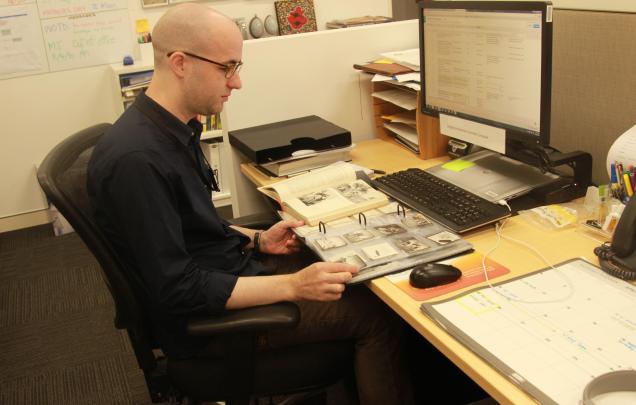Weemala project: Q&A with Marc Smith

To celebrate the launch of Weemala, we have asked Marc Smith some questions about his work with the Indigenous Language material from the Library collections, and about his experience as an intern in the Indigenous Services team.
How did you become involved in working with the State Library collections of Aboriginal Language materials?
I am a student working on a Master of Arts in Information and Knowledge Management at the University of Technology Sydney and I was first introduced to the materials through a guest lecture presented by Kirsten Thorpe, the manager of the Indigenous Services Branch at the State Library. I wrote to Kirsten to let her know that I was inspired by the potential of the work surrounding the materials for creating a more fair world, and she offered me the opportunity to come to the Library for an internship with her team. It's been an incredible experience.
What has been the most fascinating find that you have made when working with the collections?
One of the many fascinating things I have learned is an Aboriginal name for the whole of Australia, 'Thagoone", which was recorded from a language in the region that is sometimes known as the Central West of New South Wales. The accuracy of these records is never certain, but I have already found myself thinking of Australia by that name. It will be wonderful if other names for Australia from different Aboriginal languages will emerge through this project over time.
What has been the most challenging aspect of your involvement?
The most significant part of my work has been in formulating coordinates of place names. The place names were recorded in handwriting over a hundred years ago, with varying degrees of legibility and enthusiasm, and there have been numerous types of complex place name changes since then. In my efforts to locate places I have spent a lot of time with different maps and with historical newspapers made available by the National Library through Trove. Unfortunately there were many locations that I could not resolve, and there are many more records remaining to process.
Who do you think would be interested in accessing this data set?
These names and their meanings have the potential to restore significant aspects of intellectual and spiritual landscape property to Aboriginal people. They will interest anyone who values contributing to incremental social change of that nature, and I hope especially to people of Aboriginal descent, and to Aboriginal communities.
How would you see these collections being used in the next ten years? What additions would you like to see to the dataset and to the Weemala interface?
I hope that the outstanding work that has been achieved through the Library's DX Lab collaboration with Chris McDowall will make it possible for the project to develop as a dynamic knowledge repository through the attachment of commenting threads to distinct place names and language regions, so that communities and the public might help to accurately locate the places and discuss their meanings. I hope that people will be able to also attach historically unrecorded Aboriginal place names and meanings surviving in current usage or memory. I hope that other library and archive institutions will contribute similar place name records in their collections to the project. Mobile device compatibility may also represent a future accessibility consideration for remote communities.
Thanks Marc from the Indigenous Services team for your wonderful work on Wehttps://dxlab.sl.nsw.gov.au/building-weemala/emala.
If you are interested in collaborating with the Indigenous Services team contact us!